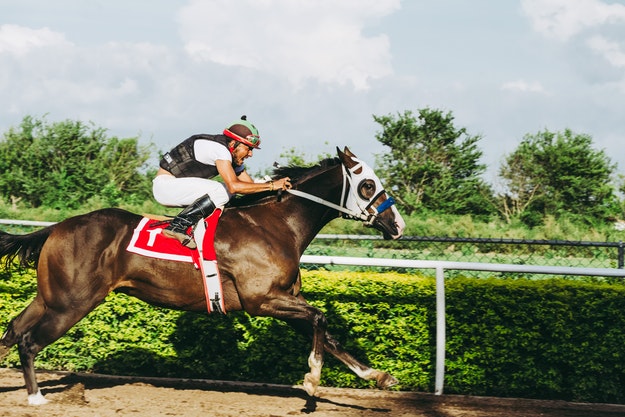Racehorses are very special animals with a truly unique purpose. They come in a small variety of breeds and weigh an average of 1000 pounds. They have the ability to reach speeds of over 40mph. Racehorses are amongst the best athletes out there. To achieve and maintain such levels of form and performance, they have to be born and bred in specialized conditions. They are pampered and live like kings and put in legendary work to win races and rake in profits and bets at timeform.com. As a result, their diets, and general quality of life differ from that of horses for other purposes. So, what does the life of a racehorse look like, I hear you ask. The answer is quite intriguing, read on to find out more.
Can Any Horse be A Race Horse?
For starters, not all horses can be used as racehorses. Horse racing is a very unique sport and there are generally only four particular breeds suited to be racehorses. Depending on the type and venue of the race the horse would have to be of the lineage of one or a mix of the following breeds; Thoroughbred, Standardbred, Arabian horse, or Quarter Horse. A racehorse would live between 22-28 years but would only race for about 13-15 years of its life.
The Life Of A Race Horse
At about 18 to 20 months, foals would begin training. Horses like humans have different personalities. As such, those who are curious, friendly, and comfortable around people are usually chosen to be prepared. The training of foals would go on till it’s 2nd or 3rd year. During such periods, training would focus on areas like acclimatizing to the weight of the saddle. Also, they get used to how the bit feels in their mouth and the feel of a tightened girth. They also get used to the weight of a jockey. They are also taught to be calm when being loaded into the starting gate. They are also trained to stand still in the gate and then to race out as the gate opens.
At the ages of about 2 to 3 years, the focus of the training would be on speed and fitness. Equines will also race with other horses to get used to the nature of racing. Here they also learn to stay on course while being bumped by fellow racehorses. It also gives jockeys a chance to train them on how to be guided to the rail by the rider.
The Race Horse’s Daily Routine
After about three years, a racehorse will spend its day in this manner
5:00 am: First meal of the day
6:00 am – 12:00 pm: Exercise and training
12:30 pm: Second meal of the day
1:00 pm – 3:30 pm: Rest time for both horses and trainers
3:30 pm – 5:30 pm: Grooming and injury check. Spend time on the horse walker or go out into the field. A chance for the jockey and the horse to bond off the track.
8:30 pm: Last check of the day and last feed if necessary
Nutrition
The nutrition of a racehorse consists mainly of starch and protein along with vitamins and minerals. Lots of water is essential. This scientifically formulated diet is to provide the best performance.
Race Day Procedures
On the day of the horse racing event, the horse is likely to be fed an hour before departure to the race grounds. Upon arrival at the racecourse, the horse will be moved to the racecourse stable where the horse can relax and be fed if necessary.
Before the race starts, the horse is taken to the pre-parade ring and the saddled up. After which it will be moved to the main parade ring.
At the start of the race, girths are checked, and horses are loaded.
After the end of the race, the winner has a urine sample taken and tested for the presence of banned substances. The horses are then washed and allowed to walk about until they are dry. The horse is usually given some days off training after the competition.
Sources:
- https://worldinsport.com/a-typical-life-of-a-racehorse/ – World In Sport
- https://bleacherreport.com/articles/2437211-living-like-a-king-the-pampered-life-of-a-racehorse – Bleacher Report
- https://horseracingkills.com/issues/life-of-a-racehorse/ – Coalition For The Protection Of Racehorses











